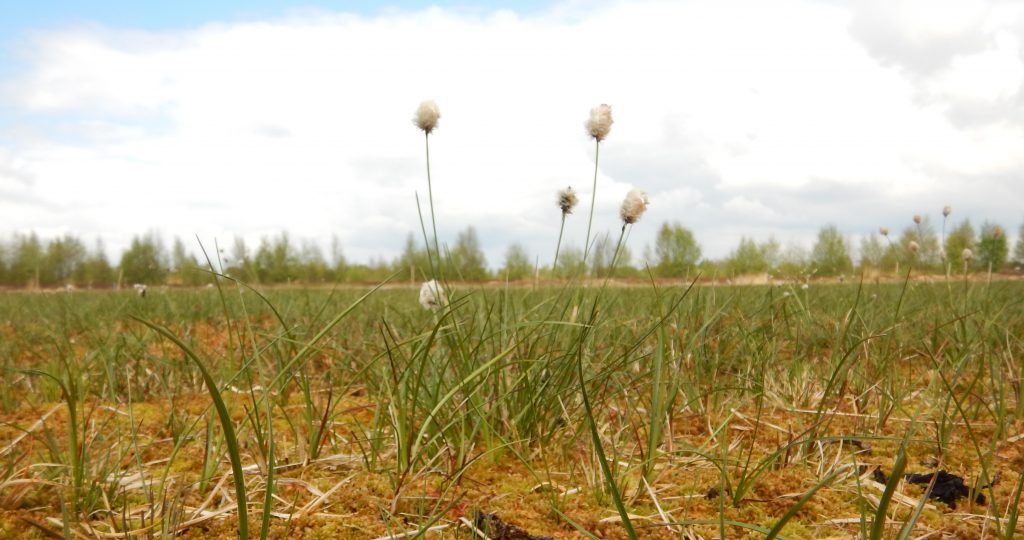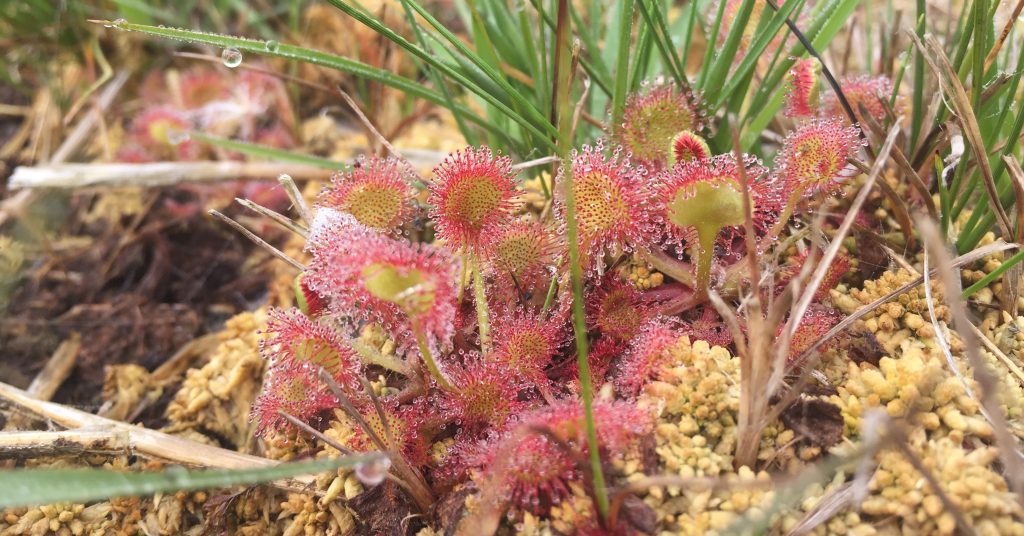Biodiversity on peat moss sites – part 1
Red-listed plant species identified
How many plant species grow on Klasmann-Deilmann’s peat moss sites? And which are officially classed as threatened? A doctoral student at Leibniz University Hannover’s Institute of Environmental Planning (IUP) is addressing these questions. She carried out surveys comparing the flora on these sites with that at semi-natural peatland locations and post-extraction sites under restoration, and came to a highly unexpected conclusion.
The objective of peat moss (Sphagnum) farming is the sustainable use of former commercial peatfields. These areas also provide a habitat for at-risk flora and fauna. The project is taking place in close collaboration with the Braunschweig-based Thünen Institute and Leibniz University Hannover’s Institute of Environmental Planning (IUP).
Since March 2017, Amanda Grobe and Lotta Zoch, doctoral students at the IUP, have been investigating the flora and fauna on our peat moss sites. Amanda Grobe found at-risk, red-listed plants there. But what exactly does ‘red-listed’ mean?
Red lists of flora and fauna
Red lists are inventories of animals and plants that are endangered, have disappeared or are extinct. The International Union for Conservation of Nature (IUCN) publishes one at regular intervals. Also relevant in Germany are the red lists published at national and federal-state level. These registers can be used to ascertain how much at risk a given species is. They also flag up where urgent action is required to protect threatened flora and fauna, and are indicators of the decline in global biodiversity.
The situation in Germany
Germany is home to some 28,000 plant species. To draw up a red list of the country’s endangered flora, the Federal Agency for Nature Conservation (BfN) has surveyed 13,907 of our indigenous plants – almost half – as to their vulnerability. The outcome: 3,990 species were rated by the BfN as threatened and 512 as extinct.
Flora occurring on our peat moss sites
Amanda Grobe’s survey revealed around 50 different plant species (vascular plants and mosses) growing on our Sphagnum-farming sites. Some 20 of these are red-listed, including Magellanic bogmoss (Sphagnum magellanicum), white beak-sedge (Rhynchospora alba) and bog-rosemary (Andromeda polifolia). These plant species are characteristic of raised bogs. Amanda Grobe carried out surveys comparing the flora on the peat moss sites with that at semi-natural peatland locations and post-extraction areas under restoration. She identified an average of 35 plant species on the semi-natural peatland sites, 20 of which are on the red list for Lower Saxony and Bremen. By comparison, the floral diversity on the sites under restoration is lower at 15 species (of which five are on this red list). These findings show that certain species typical of raised bogs do not become established unaided in these re-wetted areas. However, distributing Sphagnum species on former peat extraction sites may enhance biodiversity. To date, no legal provision has been made for the active introduction of typical raised-bog vegetation such as peat moss. However, our findings suggest this should be permitted as a form of post-extraction land use. This would entail adapting the legal framework and finding appropriate financing solutions such as compensation payment for additional stored carbon or greater biodiversity.
If you’d like to know which animals have taken up residence on our peat moss sites, click here to read the second part of our report. One success story here is the lapwing.

